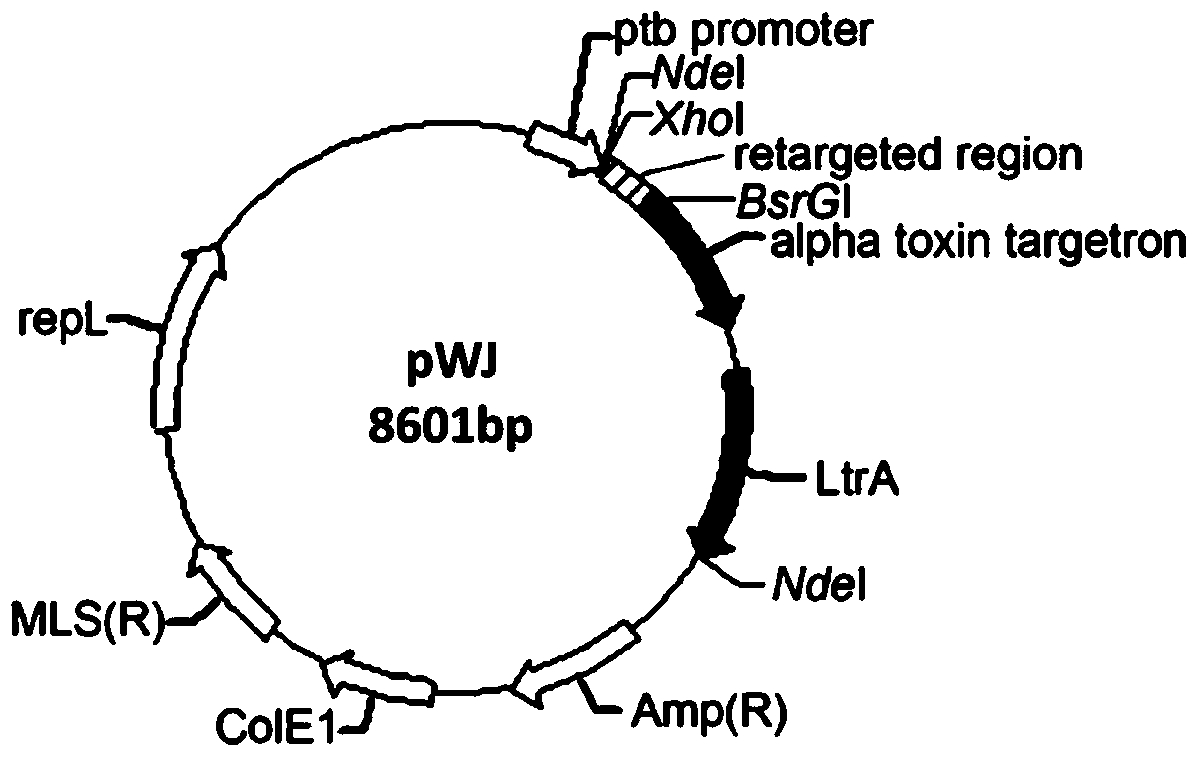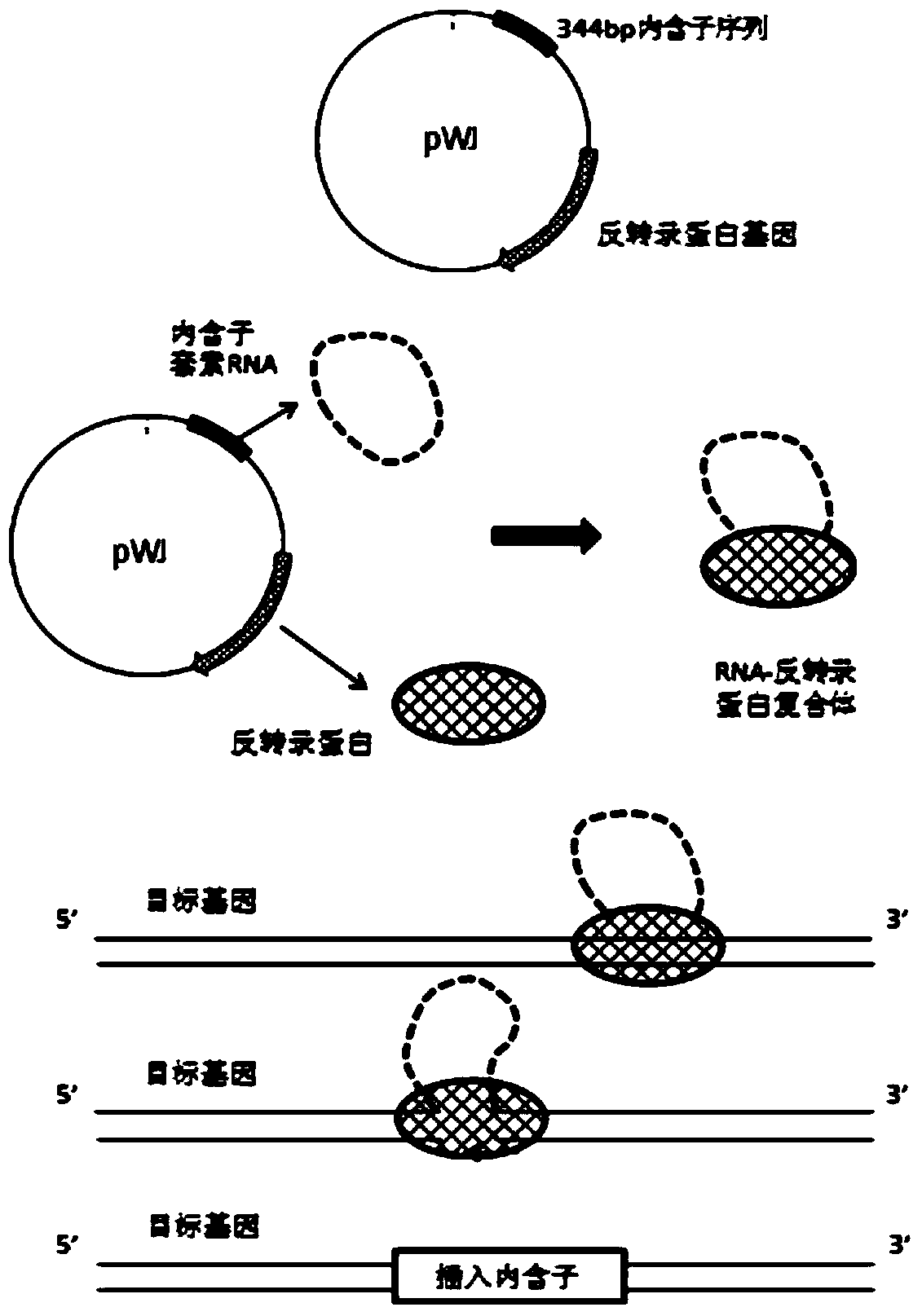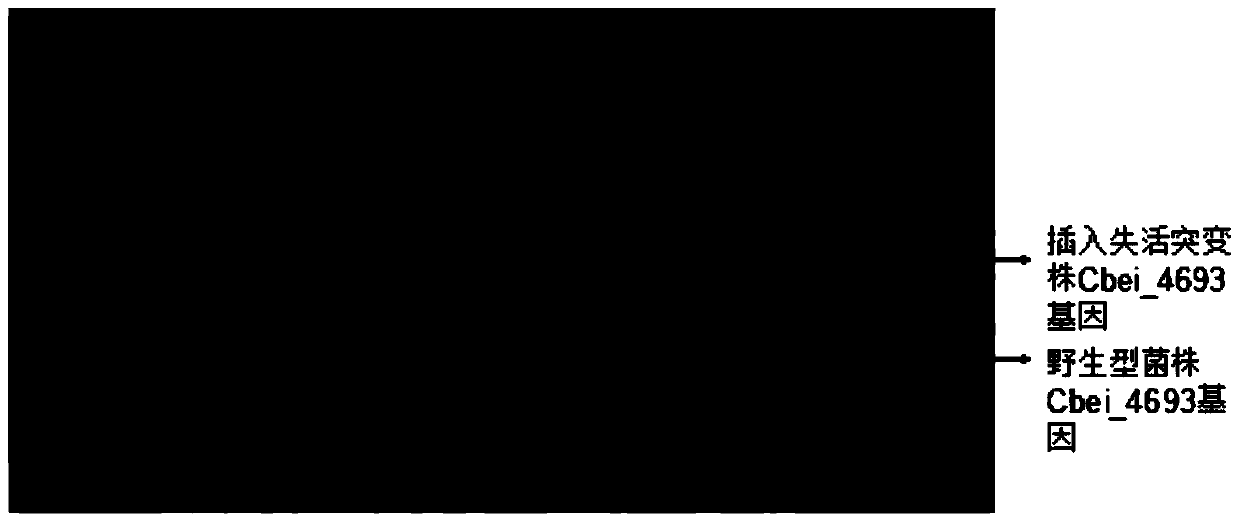A method for improving the stress resistance of Clostridium beijerinckii ferulic acid
A technology of Clostridium beijerinckii and stress resistance, applied in the field of genetic engineering, can solve the problem of reducing the amount of solvent, etc., and achieve the effects of high butanol production, high stress resistance, and strong stress resistance
- Summary
- Abstract
- Description
- Claims
- Application Information
AI Technical Summary
Problems solved by technology
Method used
Image
Examples
Embodiment 1
[0035] Example 1: Construction method of Clostridium beijerinckii Cbei_4693 gene inactivation mutant.
[0036] 1. Design introns:
[0037] According to the Cbei_4693 gene sequence (as shown in SEQ ID No: 1) of Clostridium beijerinckii included in the NCBI database, a suitable insertion gene site is designed with the help of software ( http: / / www.clostron.com), choose to insert between the 335th and 336th bases, and generate an intron sequence, and synthesize an intron sequence S-335 whose sequence is shown in SEQ ID NO:2.
[0038] 2. Construction of Cbei_4693 insertion inactivation vector:
[0039] The vector pWJ (provided by Mr. Yang Sheng, Shanghai Academy of Biological Sciences, whose sequence is shown in SEQ ID NO: 5) and the DNA fragment S-335 were double-digested with XhoI and BsrGI, respectively. After the digested product was purified by a purification kit (Takara), it was ligated by T4 ligase (Takara) overnight. Transform the ligated recombinant plasmid into Esche...
Embodiment 2
[0050] Example 2: Passage stability of recombinant bacteria with inactivated Cbei_4693 gene.
[0051] The culture medium formula described in the present embodiment:
[0052] Plate medium: yeast powder 3g / L, peptone 5g / L, soluble starch 10g / L, ammonium acetate 2g / L, sodium chloride 3g / L, magnesium sulfate heptahydrate 3g / L, potassium dihydrogen phosphate 1g / L, Dipotassium hydrogen phosphate 1g / L, ferrous sulfate heptahydrate 0.1g / L, agar 15g / L, the rest is water, pH 6.
[0053] Seed medium: yeast powder 3g / L, peptone 5g / L, soluble starch 10g / L, ammonium acetate 2g / L, sodium chloride 3g / L, magnesium sulfate heptahydrate 3g / L, potassium dihydrogen phosphate 1g / L, Dipotassium hydrogen phosphate 1g / L, ferrous sulfate heptahydrate 0.1g / L, the rest is water, pH 6.
[0054] Fermentation medium: glucose 30g / L, ammonium acetate 2.2g / L, potassium dihydrogen phosphate 0.5g / L, dipotassium hydrogen phosphate 0.5g / L, sodium chloride 0.01g / L, magnesium sulfate heptahydrate 0.2g / L , ferrou...
Embodiment 3
[0061] Example 3: Investigation of stress resistance of recombinant bacteria and starting strains to ferulic acid.
[0062] Plate medium: yeast powder 3g / L, peptone 5g / L, soluble starch 10g / L, ammonium acetate 2g / L, sodium chloride 3g / L, magnesium sulfate heptahydrate 3g / L, potassium dihydrogen phosphate 1g / L, Dipotassium hydrogen phosphate 1g / L, ferrous sulfate heptahydrate 0.1g / L, agar 15g / L, the rest is water, pH 6.
[0063] Seed medium: yeast powder 3g / L, peptone 5g / L, soluble starch 10g / L, ammonium acetate 2g / L, sodium chloride 3g / L, magnesium sulfate heptahydrate 3g / L, potassium dihydrogen phosphate 1g / L, Dipotassium hydrogen phosphate 1g / L, ferrous sulfate heptahydrate 0.1g / L, the rest is water, pH 6.
[0064] Fermentation medium: glucose 30g / L, ammonium acetate 2.2g / L, potassium dihydrogen phosphate 0.5g / L, dipotassium hydrogen phosphate 0.5g / L, sodium chloride 0.01g / L, magnesium sulfate heptahydrate 0.2g / L , ferrous sulfate heptahydrate 0.01g / L, manganese sulfate mo...
PUM
 Login to View More
Login to View More Abstract
Description
Claims
Application Information
 Login to View More
Login to View More - R&D
- Intellectual Property
- Life Sciences
- Materials
- Tech Scout
- Unparalleled Data Quality
- Higher Quality Content
- 60% Fewer Hallucinations
Browse by: Latest US Patents, China's latest patents, Technical Efficacy Thesaurus, Application Domain, Technology Topic, Popular Technical Reports.
© 2025 PatSnap. All rights reserved.Legal|Privacy policy|Modern Slavery Act Transparency Statement|Sitemap|About US| Contact US: help@patsnap.com



